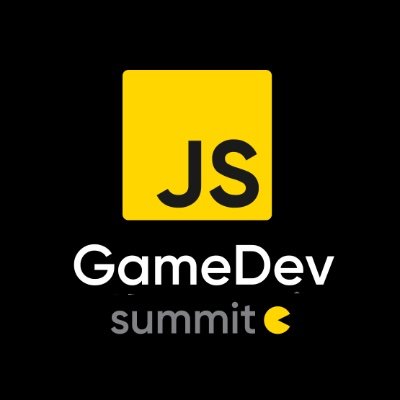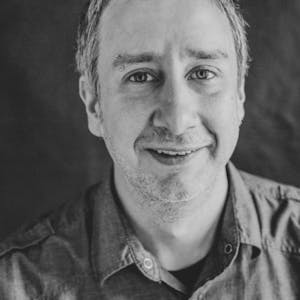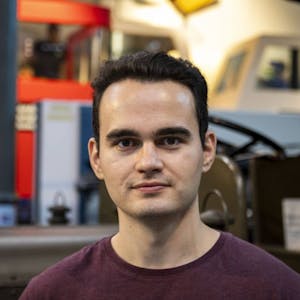So let's talk about a bit of a PlayCanvas. So PlayCanvas is a web first game engine. So as you can see from the editor there, we have on the right is very similar to a few other game engines that we have in the market. But again, the cool thing about that is that it's running 100% on your mobile device, on your browser, right? Which does mean that you can like, you can use it on a mobile device as well. But you can it's fully cross platform out of the box. So you can use it on. You can use it on on Windows, Mac, Linux, anything that you can run a browser on. You can run PlayCanvas. Maybe it even works on Raspberry Pi. I don't know if it has WebGL. Anyway.
The PlayCanvas is really spilt into two main things. So first is what we call the PlayCanvas engine. So the PlayCanvas engine is what contains all the core functionality for a PlayCanvas game to function, or application to function. So it has stuff like vectors and math and quaternions, mathematics, and like loading meshes and textures and loading that GPU shaders. So all that stuff is on the PlayCanvas engine, which is fully open source and is on GitHub. That's why GitHub is important to us. So you can you can help over there right now GitHub.com slash PlayCanvas slash engine. And you can you can make contributions yourself, you can check out what we've been doing and you can also use it like to to to learn a little bit more about how to make like game engine architecture. You know, how do we do that. The final build of the PlayCanvas engine is only 335 kilobytes zipped. So that means that when you make a PlayCanvas game and then you ship, for people to download or and to play, the PlayCanvas footprint is only 335 kilobytes. Again, that's zipped. Once you unzip it, it's a little bit more, and that's a little bit over a megabyte, still pretty small. So our footprint is very small. It is available as a standalone so you can the PlayCanvas engine without the PlayCanvas editor, which we'll talk about in a second. And so the PlayCanvas engine is on npm so you can use it from there. You can also just download the minified version and use for that.js, a single file, just import it. And go ahead. Or you can build from source. You can download the open source right there, npm install, npm run build, there you go. You have it there, you can use it from there.
Now the online editor, of course, uses the PlayCanvas engine, and this is what powers the playcanvas.com. And we really do collaborative by design. So everything you do on PlayCanvas is very easy to collaborate with other people. We'll talk about it in a second once we actually jump into the workshop and we actually do stuff, you'll see how easy it is to have multiple people working on the same scene at the same time. But it is collaborative by design. We have a powerful backend that powers everything, so everything that you do in terms of you open the editor, and you're like, oh, I want to use this mesh, I want to use this texture, all you have to do is drag it to the editor, it uploads to our systems, and then we do all the heavy lifting, like converting to the proper things, doing compression, blah, blah, blah. So you don't have to worry about anything. Yeah, so as I said, we do asset processing, texture compression, and all the modern conversion except most of the all of the major file formats. GLBs is our favorite one. FBX also works pretty well. You have a free tier as well, so we do have some paid plans if you want more deep team management functionality, but you do have a very powerful feature as well, with a lot of storage, and with self hosting, as well. Yeah, so unlimited, free hosting for published apps and games as well, which, again, I'll show you how to do it later. So just talk a bit, some of the features that Lick Canvas has. So all the code editing for your own scripts is done online as well with built-in intellisense. So we use actually the same, sorry, we use the same code editor as VS Code, but it's for the web, but it's powered by the same engine, it's called Monaco. We have the powerful back-end again that does like all that heavy lifting for the assets for us, which does mean then, as you're building stuff, you have zero build-time. So you need to wait for your importing stuff, you know, you're loading the project, it's all like it's already there. It's like basically loads up. That's a bit of the powerful backend, but also a bit about JavaScript itself that is not really a compiled language, you know. So when you're building stuff with Play Canvas, we code in JavaScript, so you don't need to, like, compile everything as you do stuff. It does mean a zero build-time then. It does come with WebXR support out of the box, we have some examples for that as well. We do have also a fully featured Git-like version control system, which again, as I talked there in the beginning, we'll be able to, like, fork projects. So this is like just a piece of that. So we can, like, fork projects, but you can also create checkpoints, you can create branches, merge back, very much like a Git-like system, which again, I'll talk about later. And the editor itself. Multi-platform. And when you load it up, is super small alone. It's only, like, 2.1 megabytes, if you check on, like, Network tab, how much have you actually downloaded it? It's only 2.1 megabytes. Again, it unzips, you know, it compresses later. But the main thing is only 2.1 megabytes. And it supports like all the things that we expect from a game engine these days. We have user interface, we have audio support, positional audio support, animation system physics. You can create templates, which prefabs, as it is called in other game engines. We also have advanced graphic features. So we have a mandatory time and a real time light mapper, physical based rendering, shadows, clustered shadows, all the stuff out of the box using Play Canvas. And we have a dozen of support channels. So we have documentations with tutorials, full API references. We have our own forum as well, forums.playcanvas.com, where you can, like, post questions. So people are very, very helpful there. Shout out to the people on the forums, they're amazing. And we also have our own Discord channel as well, where sometimes we're there just to chat and help out whenever people want. I could stay here for two hours just talking about stuff Play Canvas can do, but this is getting kind of boring. So moving on.
The Play Canvas editor itself, very similar, again, to many other game engines that currently are out there. So we have the hierarchy list on the left. We have a toolbar also there on the left where you can just select what tool you want to use. You have the project assets there in the front bottom, where you have all the assets that were inserted, that were imported into that project. You have the inspector there on the right where you can inspect your selected entity. So, for instance, in this case, I'm selecting the light entity. So you have the basic information such as the name. Is it enabled? You can add some text. Then you have the transform of position, rotation, and scale. And then you also have the components, which I'll talk about later about them. But basically you define the behavior. So in this case, I added a light component and then you can select what type of light is it. Color intensity. Does it do shadows? Is it not do shadows? Like how often to update the shadow map.













Comments